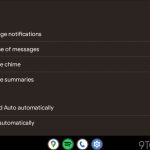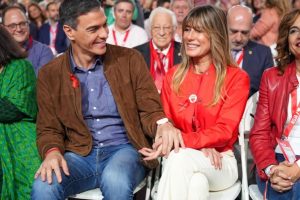In 2010, FIFA named Qatar as the venue for the 2022 World Cup. Since then, the country has been under construction. For twelve years the city of Doha has been rebuilt from scratch, raising new streets, infrastructures, buildings and stadiums, a massive change with which the Government of Qatar intends to present itself to the world and reshape the international image of the first Arab country to host a World Cup. Andrei Molodkin, a Russian artist living in France, has recreated the soccer cup that the national teams will play in a sculpture with Qatari oil as a sample of the two great crimes of this World Cup: government bribes to get the headquarters and the spilled blood of the workers killed in the reconstruction of the city. The work is exhibited to the public on November 14 and 15 at the Galería Nueva in Madrid, commissioned by the football magazine libero titled The dirtiest cup.
Super Cup in Riyadh, World Cup in Qatar and petrodollars: football is geopolitics
Know more
In August of this year, libero contacted concept artist Andrei Molodkin. The World Cup was approaching and they were clear that “the focus should be this”, they say from the magazine. “We knew we had to do something with the glass and oil, and we discovered this artist, who had previously worked with oil and even blood. He loved the idea ”, he adds. Last March, Molodkin exhibited in a London church a giant portrait of Vladimir Putin made with blood donated by Ukrainian soldiers before marching off to war. Years before, he had already challenged the government: in 2009 he represented Russia at the Venice Biennale with the work Le Rouge and Le Noir, in which he used Chechen oil and Russian blood. The artist did not explain the origin of the material until after the event was over. When the government censored his work, it had already been exhibited.
Molodkin worked oil delivery in Siberia during his two years of service to the USSR. There he discovered that oil and blood are two elements that function as “bargaining coins of war and genocide”: “During military service in the Soviet Union I saw a comrade put a gun to his heart and shoot himself. Later we were eating in the canteen and the guards took him out of the room. His body and his clothes were covered in blood, so he left a line behind him, like a signature. I had come to the army from art school, where I dreamed that culture could save the world. That day I realized that culture did not exist in the army. He gives his life for another. Nothing is important; It’s just about surviving. Seeing this man dragged along the ground, I understood that blood, like oil, is a currency. Both materials demonstrated the physical cost of the war, ”explains Andrei Molodkin to elDiario.es by email on the day of the presentation of his work in Madrid..
Since then, oil has been a frequent material in his artistic creation. In this case, the symbolism is more than evident: Qatar is the country with the third largest oil and natural gas reserves in the world. “I have produced an object that shows reality, I have filled an empty container with the political substance that sustains the 2022 tournament,” explains Molodkin. baptized as The Dirtiest Cup (“The Dirtiest Cup”), the sculpture is a block of thick glass with an interior mold that keeps the shape of the world cup. This means that, in reality, the sculpture is a void: “There is no real cup even if it seems so,” they explain in libero, “and that is also significant.” Since the cup is just a mold, the oil is the only element that creates the solid appearance of the cup. The part that looks like gold is actually the stain left by the oil when the sculpture is turned and the liquid falls to the bottom. This means there is no real gold, just dirt: “The oil tints the trophy with gold, but the dirt is inescapable,” says the artist, who purposely brought the oil from Qatar.
Thousands of dead workers
Qatar is a small country, with a surface area similar to that of the Region of Murcia and with approximately 2 million inhabitants, among whom between 75 and 88% were immigrants during the construction period, according to the United Nations. In the past, its people lived by fishing and searching for pearls, but since the discovery of oil and gas deposits in 1939, the country has subsisted on the exploitation of its natural resources. Qatar is currently one of the countries with the highest per capita income in the world. But while its regime is different from that of neighboring Saudi Arabia, Qatar is still a long way from Europe. In Qatar, women have guardianship, homosexuality is prohibited, and religion is the law. Australian athlete Josh Cavallo, the first active footballer to openly declare his homosexuality, explained in an interview with sky sports who dreams of going to the World Cup, but does not want to put his life “in danger”.
I have filled an empty vessel with the political substance that sustains the 2022 tournament
Beyond the risks that Qatar poses for the LGTBI community, women and migrants, the preparations for the World Cup left at least 6,500 workers deadaccording to the analysis he performed Guardian directly consulting the countries of origin of the workers. However, Amnesty International assures that between 2010 and 2019 over 15,000 non-Qatari people died whose causes of death have not been sufficiently investigated, so the numbers would be higher, since “the category of ‘cardiovascular disease’ may be hiding a large number of deaths.” Compared to the figures estimated by the organization, the Government of Qatar only admits 40 deaths, according to El País.
Until 2019, the work system in Qatar worked through the kafala, a mechanism that assigned each immigrant worker a kind of supervisor. He had the right to keep the employee’s passport and prevent him from leaving work or returning to his country. The supervisor could also not pay his salary and, of course, force him to work the shift in the hottest months of the year. Until recently, the employees of the Qatar World Cup have worked outdoors in temperatures above 50ºC. The organizations that fight for human rights demanded from the beginning a change in the working conditions of the workers of the World Cup. Given the scandal generated, FIFA pressured the Qatari government to improve the employment situation before the World Cup is held in 2022. Today, workers can leave work if they wish, and they have a minimum salary of approximately 300 euros , which continues to be a very unbalanced figure with respect to the economic level of the country. All the constructions were made in a period in which this labor reform did not exist.
Andrei understands art as an inevitable political tool: “The moment people donate their blood to my sculptures, the work is instantly politicized,” he says. “The material fills and transforms these concepts into something different, into something new. It is essential to put people up against difficult ideas, up against a situation of shame that they are not used to discussing, such as nationalism, blood, violence and death.” On other occasions, the artist has filled platforms with oil letters that formed the word Democracy either Human rightsalways playing with industrial materials “to pump the liquid through the same cycle”.
The work will be put up for sale for a value of 150 million dollars. The artist decided to put this unattainable figure on it for its symbolic meaning: it is the same amount of money with which Qatar supposedly managed to be chosen for the 2022 World Cup, based on bribery. according to FBI investigations. The families of the victims of the construction in Qatar have not received any compensation, “while the construction companies and FIFA pocket billions,” says Molodkin. The hypothetical purchase of the work would bring very positive things: “With this money, a compensation program for mistreated immigrant workers and the families of those who died during construction will be financed,” says the artist. “You only need a footballer or a private person with integrity.”








![[Img #74675]](https://thelatestnews.world/wp-content/uploads/2024/12/They-discover-a-new-class-of-X-ray-sources-in-the-150x150.jpg)


